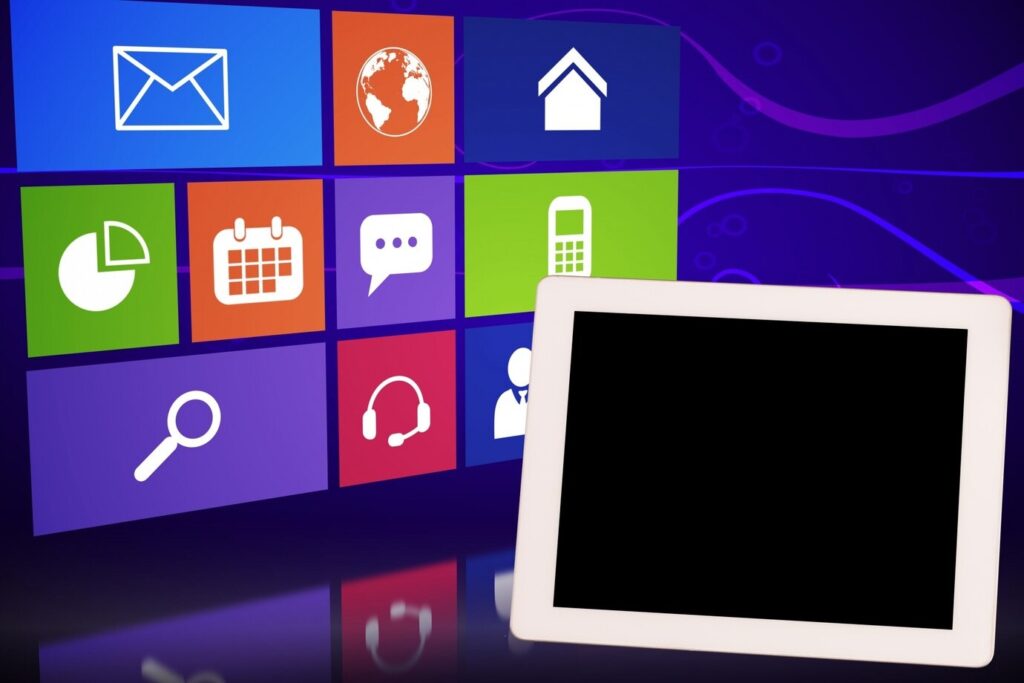In today’s diverse digital world, it is not just enough to have a website that works optimally on all the devices that one comes across; it is a necessity.
With users connecting to the web on their smartphones, tablets, laptops, desktops, and now smart TVs, the challenge of delivering consistent functionality and a seamless look and feel across all of them has never been more daunting.
This guide will take you through all the steps of performing web device testing and cross-browser testing for your site to ensure every one of your visitors has a great experience.
Understanding the Importance of Multi-Device Testing

To start with, let’s touch upon the necessity of multi-device testing in today’s web development context:
- Diverse User Base: You are targeting an audience that visits your site through a significant number of devices with disparate screen dimensions and capabilities, not to mention resolution.
- SEO Benefits: Search engines have recognized the use of mobile-friendly websites, which makes the website’s browser compatibility with multiple devices an important feature.
- User Experience: Whenever a user is faced with the same experience on different devices, it tends to respond well and is likely to engage with a product or service.
- Conversion Rates: It was discovered that websites with all-device optimization have a greater conversion rate than those without.
- Brand Perception: An optimized site that is responsive for both mobile and desktop users has a positive impact on your brand image and organization.
Critical Aspects to Test Across Devices
When conducting cross-device testing, pay close attention to these critical areas:
Responsive Design
Ensure your layout adapts smoothly to different screen sizes without breaking or obscuring content.
Functionality
Verify that all features, including forms, buttons, and interactive elements, work correctly on every device.
Performance
Check loading times and overall responsiveness across various devices and network conditions.
Visual Consistency
Confirm that your design elements, fonts, and images appear as intended on all screen sizes.
Touch-Friendly Interface
For mobile devices, ensure that clickable elements are appropriately sized and spaced for touch interactions.
Cross-Browser Compatibility
Test your site on different browsers (Chrome, Firefox, Safari, Edge) across multiple devices.
Strategies for Effective Multi-Device Testing

To ensure comprehensive coverage in your testing efforts, consider implementing these strategies:
1. Create a Device Matrix
Develop a list of devices, operating systems, and browsers that represent your target audience. Use analytics data to prioritize the most common configurations.
2. Utilize Emulators and Simulators
Start with built-in browser developer tools and device emulators to quickly test different screen sizes and resolutions.
3. Test on Real Devices
While emulators are functional, testing on real devices provides the most accurate results. Establish a device lab or use cloud-based testing services for access to a wide range of real devices.
4. Implement Automated Testing
Use automation tools to run tests across multiple devices simultaneously, saving time and ensuring consistent test execution.
5. Conduct Manual Testing
Supplement automated tests with manual testing to catch nuanced issues that automated tools might miss.
6. Test in Real-World Conditions
Consider factors like variable network speeds, different lighting conditions, and potential interruptions that users might experience.
7. Leverage Cloud-Based Testing Platforms
Choose solutions offering connectivity to a vast network of real and emulated devices for both interactive and scripted testing.
8. Implement Continuous Testing
It is recommended that device testing be incorporated into the CI/CD cycle so that problems are detected at an early stage of development.
Tools for Multi-Device Testing

Multi-device testing is crucial to make sure your website or application works appropriately across a range of devices, operating systems, and browsers. The following are some necessary tools that might support this endeavor:
1. LambdaTest
LambdaTest is a robust cloud-based cross-browser testing platform designed to help you perform multi-device testing efficiently. Here are its main features:
- 3000+ Browsers and Operating Systems: LambdaTest integrates with almost all browsers and Operating systems, such as Windows, MacOS, Android, IOS, and many others. It also enables you to gauge the different environments that your website will encounter, thereby determining its provisos and the user experience.
- Real-Time Testing: You are able to perform browser tests on other computers, manage this computer’s interactions with the website in real time, and determine the source of any bugs.
- Mobile and Tablet Testing: LambdaTest supports emulation and simulation for mobile and tablet devices, which helps in testing websites for their responsiveness of layout across variant sizes and resolutions.
- Geolocation Testing: LambdaTest also lets you see how your website or application works in different geographical locations, which makes it easier to determine if there is any problem with that location.
- Automated Testing Integration: LambdaTest integrates with automation frameworks like Selenium, Cypress, as well as Playwright so that people can automate regular testing procedures on various devices.
- Collaboration Features: This allows you to record the bugs, share screenshots, and involve your team through Slack, Jira, and Trello while testing.
- Cloud-based Infrastructure: Since LambdaTest is cloud-based, it has no issues with physical hardware devices, as all are available on the cloud. This platform enables developers to establish connections with a large number of browsers and devices to make multi-device testing more efficient regarding costs.
Thus, integrating LambdaTest into your multiple-device approach will greatly improve the convenience and effectiveness of the testing process. It will ensure that all visitors to your site are equally comfortable, no matter the type of device they are using.
2. Browser Developer Tools
Most modern browsers include responsive design modes and device emulation features. Chrome DevTools and Firefox Responsive Design Mode are exceptionally robust.
3. Responsinator
A simple tool for quickly visualizing how your website looks on various popular devices.
4. Ghostlab
Allows for synchronized browsing, testing, and debugging across multiple devices simultaneously.
5. Google Mobile-Friendly Test
It is a free tool that helps you determine whether a given site is mobile-friendly according to Google standards.
6. Lighthouse
Software that is freely available and fully activates operations to improve the quality of the websites and their performance, accessibility, and readiness for mobile platforms.
Step-by-Step Guide to Multi-Device Testing

The following are the procedures that have to be taken so as to enable one to perform the multi-device test of the website appropriately:
Step 1: Define Your Testing Scope
- Gather as much information as possible from your website to have an idea of the devices, browsers, and operating systems your target audience commonly uses.
- Create a list of target devices and browsers that need to be concentrated on, always noting that the range must be selected in terms of screen size and functionality.
Step 2: Set Up Your Testing Environment
- Gather physical devices for your device lab, focusing on popular models and those with unique characteristics.
- Set up emulators and simulators for devices you can’t test physically.
- Sign up for cloud-based testing services to expand your device coverage.
Step 3: Prepare Your Test Cases
- Develop a comprehensive list of features and functionalities to test.
- Create specific test scenarios that cover both standard and edge cases.
- Include tests for responsiveness, functionality, performance, and visual consistency.
Step 4: Conduct Emulator/Simulator Testing
- Use browser developer tools to test responsiveness across various screen sizes.
- Employ device emulators to check your site’s behavior on different operating systems.
- Note any issues or inconsistencies for further investigation on real devices.
Step 5: Perform Real Device Testing
- Test your website on the physical devices in your device lab.
- Use cloud-based services to access devices you don’t have physically.
- Pay special attention to touch interactions, keyboard input, and device-specific features.
Step 6: Automate Cross-Device Testing
- Implement automated testing scripts using tools like Selenium or Appium.
- Set up your CI/CD pipeline to run these tests automatically for each new build or deployment.
- Configure your automation to cover a wide range of devices and scenarios.
Step 7: Conduct Manual Testing
- Perform manual tests to catch issues that automated tests might miss.
- Focus on user experience aspects like navigation flow, content readability, and overall feel of the site.
- Test under various real-world conditions (e.g., poor network connectivity, bright sunlight).
Step 8: Analyze and Document Results
- Compile the results from all your testing methods (emulators, real devices, automated and manual tests).
- Document any issues found, including screenshots and steps to reproduce.
- Prioritize issues based on severity and impact on user experience.
Step 9: Fix and Re-test
- Address the identified issues, starting with high-priority problems.
- Re-test on affected devices to ensure fixes don’t introduce new problems.
- Conduct regression testing on other devices to confirm that fixes haven’t negatively impacted previously working configurations.
Step 10: Implement Ongoing Monitoring
- Set up real-user monitoring tools to gather data on actual user experiences across devices.
- Regularly review analytics to stay informed about changing device usage patterns among your audience.
- Schedule periodic comprehensive multi-device tests to catch any issues that may arise from updates or changing technologies.
Best Practices for Multi-Device Testing

Here are some best practices that will help you make the most of multi-device testing:
- Prioritize Based on Analytics: Base your testing on the most popular gadgets and the browsers that your viewers use most often.
- Test Early and Often: It is best to include multi-device testing in all phases of development, not just pre-launch testing.
- Use a Combination of Testing Methods: Emulator/simulator testing conformance with real device testing, automated script, and manual testing.
- Consider Accessibility: Make sure all the site’s content is accessible with disabilities on any device.
- Test Performance: Optimize for speed on mobile devices and ensure the website loads within a few seconds to allow easy navigation and fast response time on slow connections.
- Check for Visual Consistency: Ensure your design looks as intended across different screen sizes and resolutions.
- Validate Input Methods: Test with touch, mouse, and keyboard inputs to ensure all interaction methods work smoothly.
- Rotate Devices: Test both portrait and landscape orientations on mobile devices.
- Check Third-Party Integrations: Ensure that any third-party tools or plugins you use are also compatible across devices.
- Stay Updated: Regularly update your testing devices and tools to keep pace with new device releases and browser versions.
Challenges in Multi-Device Testing
While crucial, multi-device testing comes with its own set of challenges:
- Device Fragmentation: The sheer number of device/OS/browser combinations can be overwhelming.
- Rapid Technology Changes: New devices and browser versions are constantly being released.
- Resource Constraints: Acquiring and maintaining a comprehensive device lab can be expensive and time-consuming.
- Replicating Real-World Conditions: It’s challenging to simulate all possible user environments and scenarios.
- Balancing Thoroughness and Efficiency: Finding the right balance between comprehensive testing and timely releases can be tricky.
Final Thoughts
It is now indispensable to pay attention to the compatibility of the site in all types of devices so as to enhance usability, visibility by search engines, and perception by potential customers. Testing is a bit more complex but is equally as crucial since customers are using their websites on different devices ranging from smartphones to smart TVs.
It will ensure that every visitor to your website is able to go through your site without the experience being interrupted in any way, and this can be done using emulators as well as real devices by following a strict systematic multi-device testing procedure and, where necessary, automating the process.
You can stay ahead of the curve by introducing multi-device testing as soon as you start building the application, testing over and over again through the CI/CD pipeline, and monitoring real-world results on a regular basis.
This work might be done conveniently and in the shortest time with the right set of tools, which includes browser development tools, cloud platforms, and LambdaTest. Doing this will assist you in copying the same look and feel from one gadget to another, thus providing a standardized and high-quality experience to the users.
Finally, investing in multi-device testing leads to higher user satisfaction and also lays the foundation for creating a more favorable brand image, enhanced engagement, and, hence, higher conversions.







